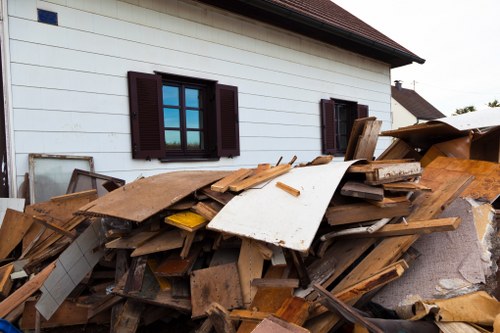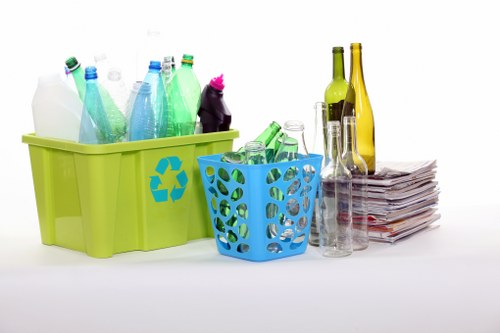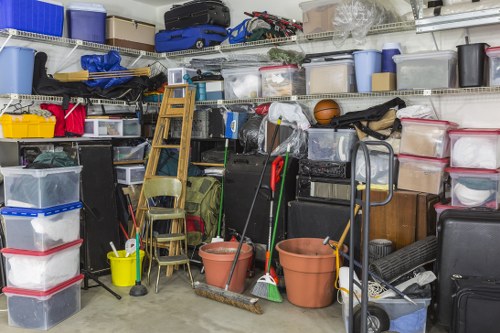Comprehensive Construction Waste Clearance in Yeading

Construction projects, whether large or small, generate a significant amount of waste. Efficient management of this waste is crucial not only for maintaining a clean and safe environment but also for complying with local regulations. In Yeading, construction waste clearance services play a vital role in ensuring that construction sites are left spotless and that waste materials are disposed of responsibly.
Yeading, a bustling suburb in London, has seen considerable growth in construction activities over the past few years. With this growth comes the challenge of managing construction debris, rubble, and other waste materials. Proper construction waste clearance helps in minimizing the environmental impact and promotes sustainable building practices.
Choosing the right construction waste clearance service in Yeading can make a significant difference in how smoothly your project progresses. It ensures that your site remains organized, safe, and compliant with local waste disposal regulations.
Why Construction Waste Clearance is Essential

Construction waste clearance is not just about removing unwanted materials from your site. It encompasses a range of activities aimed at managing waste in a responsible and efficient manner. Here are some key reasons why it is essential:
- Environmental Protection: Proper waste management reduces the environmental footprint of construction activities.
- Regulatory Compliance: Adhering to local waste disposal regulations helps avoid legal issues and fines.
- Site Safety: A clean site minimizes hazards, ensuring the safety of workers and visitors.
- Cost Efficiency: Efficient waste clearance can lead to cost savings by reducing the need for additional materials and space.
By addressing these aspects, construction waste clearance services contribute significantly to the overall success of construction projects.
Types of Construction Waste

Understanding the different types of construction waste is crucial for effective clearance and recycling. Common categories include:
- Concrete and Masonry: Includes broken bricks, cement, and concrete debris.
- Metals: Such as steel beams, aluminum, and copper materials.
- Wood: Timber, plywood, and other wooden materials.
- Plastics: PVC pipes, plastic sheeting, and other plastic materials.
- Hazardous Waste: Batteries, paints, and chemicals that require special handling.
Proper segregation of these materials allows for efficient recycling and disposal, minimizing the environmental impact.
Benefits of Professional Waste Clearance Services

Engaging professional construction waste clearance services in Yeading offers numerous benefits:
- Efficiency: Professionals have the expertise and equipment to handle waste quickly and effectively.
- Compliance: They ensure that all waste is disposed of in accordance with local regulations.
- Recycling: Many services focus on recycling materials, promoting sustainability.
- Cost-Effective: Reduces the need for additional resources and minimizes project delays.
- Safety: Professional handling reduces the risk of accidents and injuries on-site.
These advantages make professional waste clearance an indispensable part of any construction project.
Steps Involved in Construction Waste Clearance

The process of construction waste clearance typically involves several key steps to ensure thorough and efficient management:
- Assessment: Evaluating the amount and type of waste generated.
- Segregation: Sorting waste materials based on type and recyclability.
- Removal: Transporting waste from the site to designated disposal or recycling facilities.
- Disposal: Properly disposing of waste in compliance with environmental regulations.
- Recycling: Recovering and reusing materials wherever possible to minimize landfill use.
Each step is crucial for achieving effective waste management and maintaining a sustainable construction environment.
Choosing the Right Waste Clearance Service in Yeading
Selecting the appropriate construction waste clearance company involves considering several factors:
- Reputation: Look for companies with positive reviews and a track record of reliability.
- Services Offered: Ensure they provide comprehensive services, including recycling and hazardous waste management.
- Compliance: Verify that they adhere to all local regulations and environmental standards.
- Pricing: Compare rates to find a service that offers good value for money without compromising quality.
- Availability: Choose a service that can accommodate your project’s schedule and timelines.
By evaluating these aspects, you can select a waste clearance service that best meets your project’s needs.
Environmental Impact of Construction Waste Clearance
Construction waste clearance significantly influences the environment, and managing it responsibly is essential for sustainability. Here are some key environmental impacts:
- Reduction of Landfill Use: By recycling and reusing materials, the volume of waste sent to landfills is minimized.
- Conservation of Resources: Recycling materials like metals and wood conserves natural resources.
- Energy Savings: Manufacturing products from recycled materials generally requires less energy compared to producing them from raw materials.
- Lower Pollution: Proper disposal of hazardous waste prevents contamination of soil and water sources.
Implementing effective waste clearance practices contributes to environmental preservation and promotes a sustainable future.
Cost Considerations in Waste Clearance
Managing construction waste clearance involves various costs that need to be considered during project planning:
- Collection Fees: Charges for the transportation and handling of waste materials.
- Disposal Fees: Costs associated with disposing of waste at designated facilities.
- Recycling Fees: Expenses related to recycling materials for reuse.
- Permitting: Fees for obtaining necessary permits for waste disposal.
- Labor Costs: Costs for the manpower involved in waste clearance operations.
Understanding these cost components helps in budgeting effectively and avoiding unexpected expenses during the construction process.
Regulations Governing Construction Waste Clearance in Yeading
Compliance with local regulations is paramount in construction waste clearance. In Yeading, the following regulations must be adhered to:
- Waste Disposal Licensing: Companies must obtain the necessary licenses for waste disposal activities.
- Segregation Requirements: Proper segregation of different types of waste is mandated to facilitate recycling.
- Environmental Protection Laws: Regulations aimed at minimizing environmental impact must be followed.
- Health and Safety Standards: Ensuring the safety of workers involved in waste clearance operations.
- Reporting Obligations: Regular reporting of waste management activities to local authorities.
Staying informed and compliant with these regulations ensures smooth project progress and avoids legal complications.
Innovative Practices in Construction Waste Management
Advancements in technology and innovative practices are transforming construction waste management. Some of these include:
- Digital Tracking Systems: Using software to monitor waste generation and disposal processes.
- Modular Construction: Prefabricating components to reduce on-site waste.
- 3D Printing: Minimizing material usage and waste through precise manufacturing.
- Green Building Materials: Utilizing sustainable materials that produce less waste.
- On-site Recycling: Implementing on-site systems to recycle waste materials immediately.
Incorporating these practices enhances efficiency, reduces costs, and promotes environmental sustainability in construction projects.
Case Studies: Successful Waste Clearance Projects in Yeading
Examining successful waste clearance projects in Yeading provides valuable insights into effective practices:
- Residential Development: Efficient segregation and recycling of materials reduced landfill waste by 40%.
- Commercial Construction: Implementation of digital tracking systems improved waste management efficiency.
- Renovation Projects: Use of green building materials minimized waste generation.
- Public Infrastructure: On-site recycling initiatives significantly lowered the environmental impact.
- Industrial Projects: Comprehensive waste clearance plans ensured compliance and cost savings.
These case studies highlight the importance of strategic planning and the adoption of best practices in construction waste clearance.
Future Trends in Construction Waste Clearance
The future of construction waste clearance in Yeading is poised for significant advancements driven by technological innovation and sustainability goals:
- Automated Waste Sorting: Implementation of AI and robotics for efficient waste segregation.
- Circular Economy Models: Designing projects with waste reduction and material reuse in mind.
- Advanced Recycling Techniques: Developing new methods to recycle complex materials.
- Green Certifications: Increased emphasis on obtaining environmental certifications for sustainable practices.
- Integration with Smart Construction: Utilizing IoT devices to monitor and manage waste in real-time.
Embracing these trends will further enhance the effectiveness and sustainability of construction waste clearance in the coming years.
Conclusion
Construction waste clearance is a critical component of successful construction projects in Yeading. It not only ensures compliance with environmental regulations but also promotes sustainability and cost-efficiency. By understanding the types of waste, the benefits of professional services, and the best practices in waste management, construction companies can significantly mitigate the negative impacts of their projects.
Investing in reliable waste clearance services and staying informed about emerging trends will position your projects for success while contributing positively to the community and the environment.
Contact us today to learn more about our construction waste clearance services in Yeading and how we can assist you in managing your project's waste effectively.